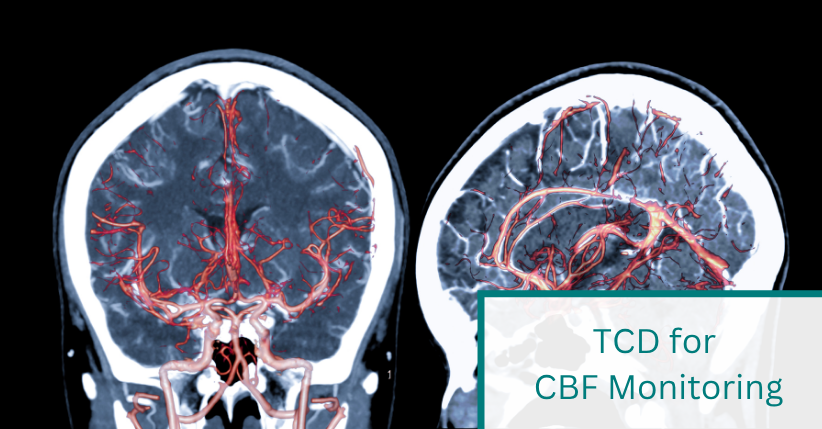
11 Aug. 2025 TCD for CBF Monitoring
Non-invasive insight into cerebral perfusion
The Clinical Gap
In neurocritical care, cerebral blood flow (CBF) plays a central role in guiding treatment decisions. Yet despite decades of progress, there is still no clinically available, continuous method to measure CBF at the bedside. A recent letter by Kishna, Zeiler, and Aries, published in The Journal of Physiology, calls attention to this gap and asks a pointed question:
Where is our cerebral blood flow monitor?
Current Limitations
In current practice, clinicians rely on intracranial pressure (ICP), arterial blood pressure (ABP), or cerebral perfusion pressure (CPP) as proxies for cerebral blood flow. But these values do not directly reflect autoregulatory function or local perfusion changes.
The letter outlines several concerns:
- ICP does not reliably track flow in the early stages of intracranial hypertension.
- Pressure-based metrics fail to capture dynamic responses to interventions.
- Relying on surrogates can mask regional ischemia or delayed therapeutic effects.
The Search for a Real CBF Monitor
The authors highlight the need for a solution that is:
- Continuous and real-time
- Reliable across different patients and brain regions
- Non-invasive and practical enough for routine use
Promising approaches include:
- Diffuse Correlation Spectroscopy (DCS)
- Advanced ultrasound and optical technologies
However, these remain under development and lack broad clinical validation.
While promising, optical techniques such as diffuse correlation spectroscopy (DCS) and time-resolved near-infrared spectroscopy (NIRS) currently face significant limitations: low depth penetration (~1–2 cm), signal contamination from extracerebral tissues, reliance on bulky and costly laser-based systems, and the need for specialized hardware expertise. These constraints limit their clinical applicability, especially in acute care settings.
Where TCD Fits
Although the letter does not name a preferred method, transcranial Doppler (TCD) currently offers one of the most accessible tools for bedside cerebral flow assessment. As a velocity-based technique, TCD:
- Provides real-time insight into cerebral blood flow dynamics
- Detects changes in pulsatility and resistance
- Supports dynamic autoregulation monitoring, emboli detection, and vasospasm surveillance
While TCD does not measure absolute CBF, it remains a widely used and validated method for monitoring relative flow changes—especially when integrated into a multimodal neuromonitoring strategy.
Conclusion
The call for a true cerebral blood flow monitor remains unmet. As Kishna et al. emphasize, clinicians are still forced to rely on indirect signals when managing cerebral perfusion. Until new technologies are validated and implemented, TCD offers a practical and established approach to assessing cerebral flow trends at the bedside.
Kishna, Y. S., Zeiler, F. A., & Aries, M. (2025). Where is our cerebral blood flow monitor?. The Journal of physiology, 603(11), 3479–3480. https://doi.org/10.1113/JP289012
